The flavors of this dish were inspired by one of my favorite Persian chicken dishes called fesenjan. It’s typically made as a stew, with ground walnuts, pomegranate molasses, and onion forming the base of the sauce. I love the flavors but wanted to add a few of my own twists, so I developed this recipe for chicken breasts crusted in a spiced walnut coating and drizzled with a tangy pomegranate sauce. Since fesenjan often calls for grated carrot or butternut squash to be added to the stew, I recommend serving these crunchy coated chicken breasts with glazed or roasted root vegetables; the sweetness from the vegetables is the perfect foil for the slight bitterness of the walnuts and astringency of the pomegranate sauce. I personally love to serve spiced roasted carrots as an accompaniment to this dish – I toss them with a mixture of EVOO, fresh thyme, ground cumin, ground coriander, sumac, salt and pepper, and roast until just tender and lightly charred.
Side note: I’m kind of obsessed with the bunches of these thumbelina carrots that I buy at the local farmers market pretty much every weekend. But let’s focus on the main event here – the chicken. It’s going to need at least 2 hours to marinate in the fridge, so plan accordingly…
Whisk all your marinade ingredients together in a bowl, and set it aside.
If you’re working with large chicken breasts and not the pre-trimmed cutlets, remove any silver skin or excess fat from them. If they’re very thick you’ll probably want to butterfly them. To butterfly, lay the breast flat on the cutting board, and hold a sharp knife parallel to one side of it. Slice the knife all the way through the breast from one side to the other, cutting it into two thinner pieces, peeling the top half away as you cut. Once it’s completely open like a book (or butterfly!), cut the two halves apart.
When you’ve trimmed all the breasts, coat them thoroughly with the marinade. Stash them in the refrigerator for at least 2 hours (overnight is even better), and turn them oven occasionally.
Next comes the sauce. Sauté the onions and garlic until nice and golden.
Add the vinegar to deglaze the pan, and give it a good stir. Let it cook for about 30 seconds.
Add the chicken stock, pomegranate molasses, and honey, and bring it to a boil. Lower the heat to keep it simmering, and cook until the liquid is reduced by about half; this should take 6-8 minutes. Let it cool for a few minutes, then transfer to a blender and puree (or use an immersion blender directly in the pot).
Once you’ve pureed the sauce it needs to be reduced a bit further, so set it back over medium or medium-high heat and simmer for about 5 minutes until it’s thick enough to coat the back of a spoon. You’ll have about 2/3 cup of sauce, which you can set aside until you’re ready to serve the chicken.
Time to make that wonderful walnut crust for the chicken! The key here is to grind the walnuts into a coarse meal *without* turning them into walnut butter. Processing them along with the flour and seasonings helps prevent that, but you still need to be careful and go slowly, so use the pulse function here. Do NOT just turn on the processor and let it run.
This is what you’re going for. Spread the mixture out in a rimmed baking sheet to keep things from getting too messy.
To coat the chicken breasts, dip them in the beaten egg first, allowing any excess to drip back into the bowl.
Lay each breast on the walnut mixture and press evenly to make sure the coating adheres to the underside.
Flip it over and press down again to coat the other side.
Get your oil hot, then *turn the heat down to medium* so you don’t burn the coating – the walnuts will blacken very easily if they get too hot. If you have a really large skillet you can cook all four pieces at once, otherwise do this in two batches. Place the breasts in the pan and cook for 2-3 minutes, just until the bottoms are evenly browned.
Flip the chicken over and cook on the other side for another 2-3 minutes until the breasts are cooked through (they should feel firm when you press them).
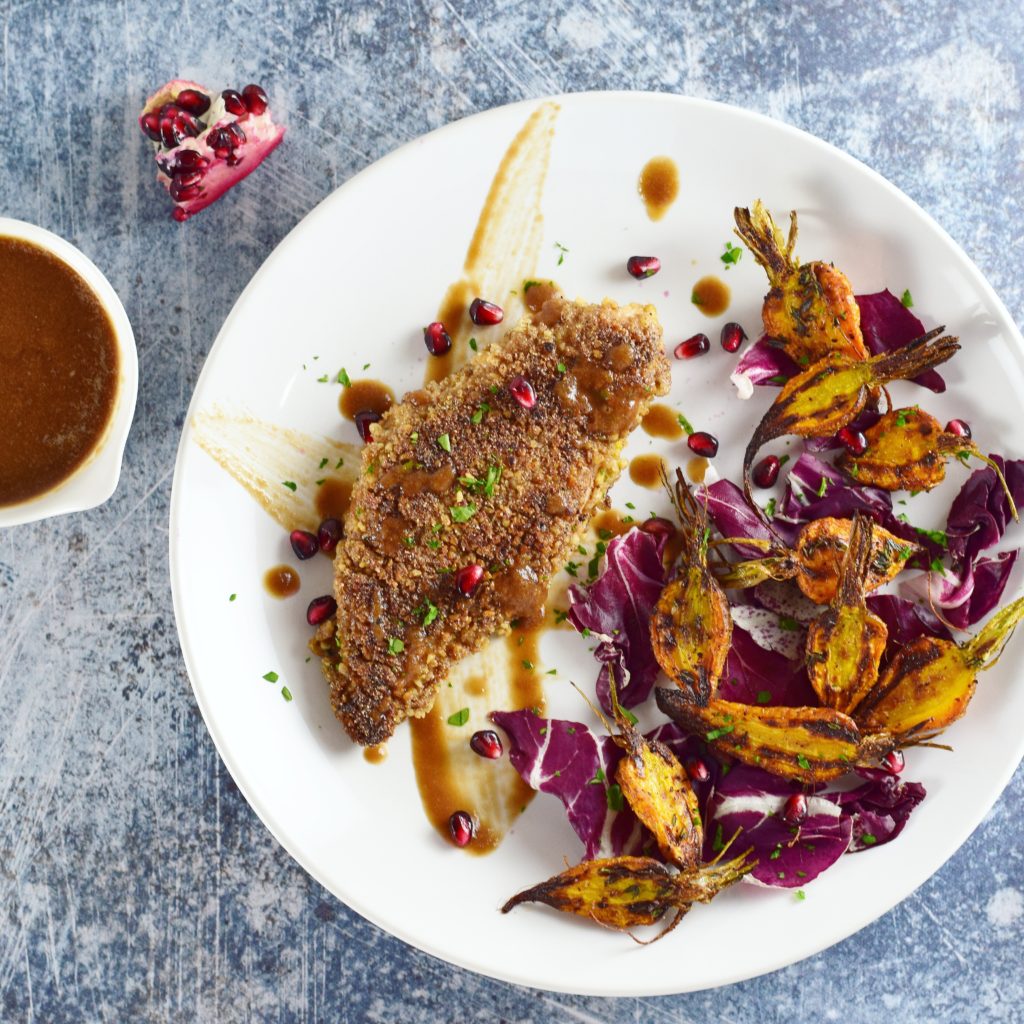 And that, my friends, is all she wrote. Plate the chicken breasts with whatever vegetable accompaniments you choose, drizzle with sauce, and garnish with pomegranate seeds and chopped parsley. Enjoy!
And that, my friends, is all she wrote. Plate the chicken breasts with whatever vegetable accompaniments you choose, drizzle with sauce, and garnish with pomegranate seeds and chopped parsley. Enjoy!
- Chicken:
- 90ml (6 Tbsp) extra virgin olive oil, divided
- 20g (4 tsp) Dijon mustard
- 2 tsp finely chopped parsley, plus more for garnish
- 1 large clove garlic, finely grated or minced
- ½ tsp kosher salt, divided
- ½ tsp ground cardamom
- ½ tsp ground sumac, divided
- ½ tsp nigella seeds
- ¼ tsp ground cinnamon
- ⅛ tsp ground coriander
- ⅛ tsp ground turmeric
- Freshly ground black pepper
- Four boneless, skinless chicken breast halves (4-5 oz each)
- 70g (½ cup) cassava flour (or substitute brown rice flour)
- 1 large egg, beaten
- 150g (1¼ cups) shelled walnuts, chopped or processed into fine crumbs
- 15ml (1 Tbsp) neutral cooking oil
- Pomegranate Sauce:
- 10ml (2 tsp) extra virgin olive oil
- 2 oz onion (¼ medium), finely chopped
- 1 small clove garlic, minced
- ⅛ tsp kosher salt
- 20ml (4 tsp) red wine vinegar
- 12 fl oz (1½ cups) low sodium chicken stock
- 80g (¼ cup) pomegranate molasses
- 21g (1 Tbsp) honey
- Roasted or glazed root vegetables for serving
- Fresh pomegranate seeds and chopped parsley for garnish
- Make the marinade: In a medium bowl whisk together 75ml/5 Tbsp olive oil with mustard, parsley, garlic, ¼ tsp salt, cardamom, ¼ tsp sumac, nigella seed, cinnamon, coriander, turmeric, and 2-3 grinds black pepper. Set aside.
- Pound the chicken: Trim any excess fat or silver skin from the breasts, and lay them flat on a cutting board. Cover the breasts with a sheet of plastic wrap, and pound with a meat mallet, rolling pin, or flat bottom of a skillet to an even ¼ inch thickness.
- Marinate chicken: Rub chicken breasts with the marinade, coating thoroughly. Cover bowl or transfer chicken breasts to a zipper bag; refrigerate for at least 2 hours, turning occasionally.
- While chicken is marinating, make the sauce: Heat olive oil in a medium saucepan over medium heat until shimmering. Add onion, garlic and salt, and sauté for 5 minutes, stirring frequently, until onion is tender and golden. Add vinegar, stirring to coat, and cook for 30 seconds. Add chicken stock, pomegranate molasses and honey, and bring to a boil. Reduce to simmer and cook sauce until liquid is reduced by half, 6-8 minutes. Remove pan from heat, and use an immersion blender to purée sauce, or transfer to a standing blender and purée until smooth. Bring sauce back up to a boil, and simmer for 5 minutes or until thick enough to coat the back of a spoon - you should have about ⅔ cup sauce. Set aside until ready to serve.
- Make the coating: Combine the remaining ¼ teaspoon salt and ¼ teaspoon sumac with 2 grinds black pepper, flour, and walnuts in a food processor. Pulse until you have a coarse meal, making sure to stir the contents occasionally. It's important to use the pulse function here instead of letting the processor run constantly - you don't want to end up with walnut butter.
- Coat the chicken: Spread the walnut meal onto a rimmed sheet pan. Working with one piece at a time, dip a chicken breast into the beaten egg, allowing any excess to drip back into the bowl. Lay the breast on top of the walnut mixture, pressing down to adhere the coating to the underside, then flip over and press down to coat the other side. The breasts should be completely covered in the walnut mixture.
- Cook the chicken: Set a large skillet over medium-high heat and add the remaining 15ml/1 tablespoon olive oil to the pan along with 15ml/1 tablespoon neutral oil. Heat the oil until shimmering, then decrease heat to medium. Gently shake excess coating off the chicken breasts and add them to the pan (do this in two separate batches if your pan is too small to hold all four at once without crowding).
- Cook the chicken on the first side for 2-3 minutes until evenly browned, then flip over and cook on the second side for another 2-3 minutes until cooked through.
- Serve: Drizzle the chicken breasts with sauce, and garnish with fresh pomegranate seeds and chopped parsley. Serve with root vegetables, and extra sauce on the side.
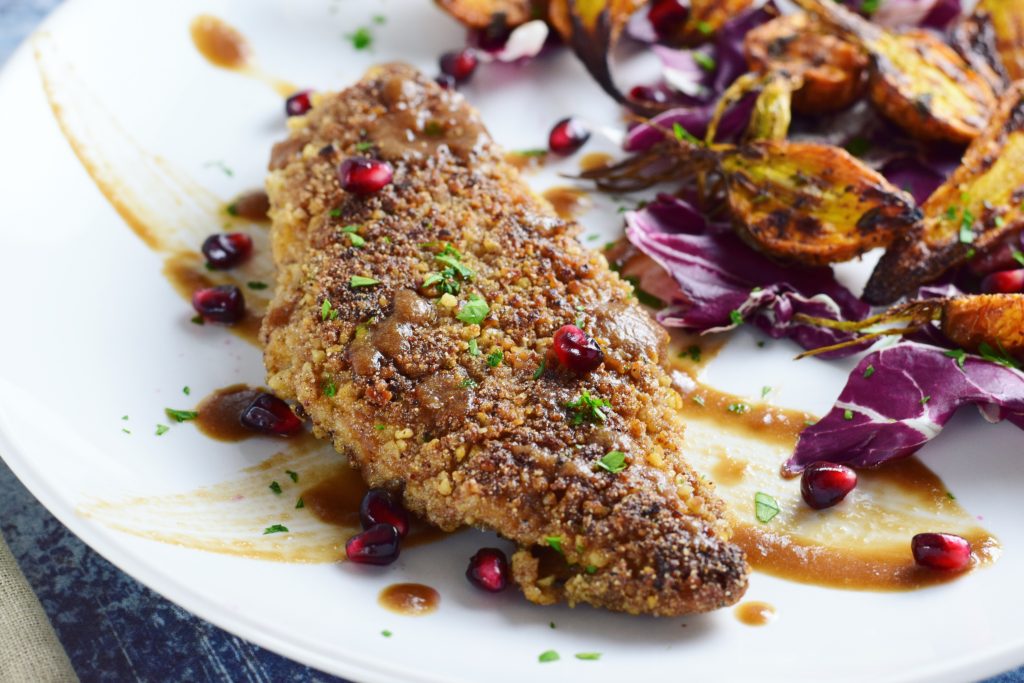

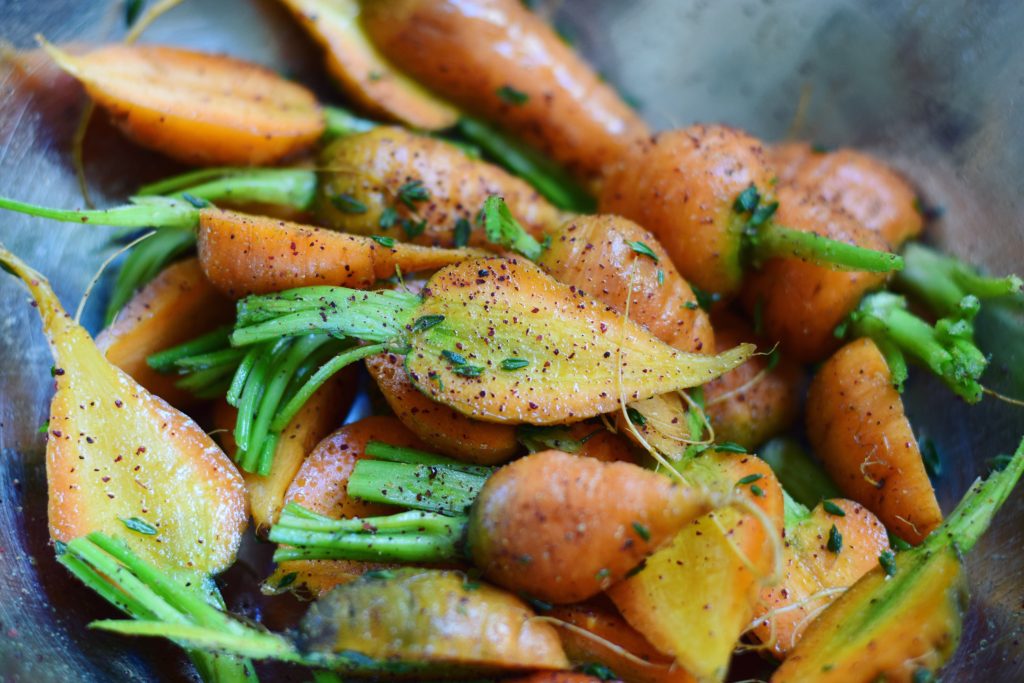
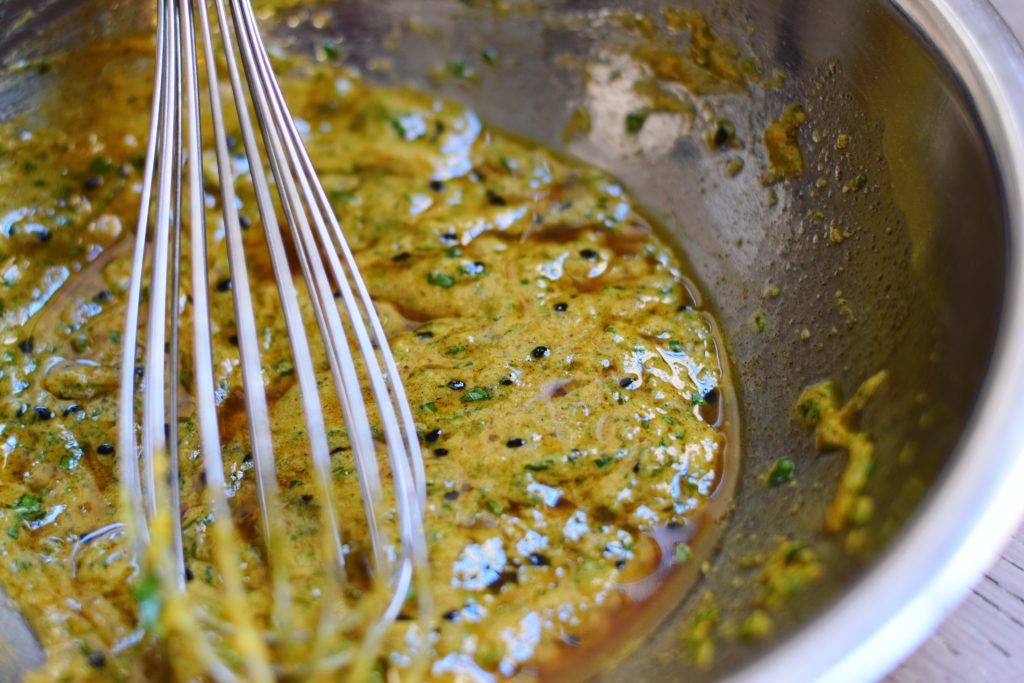
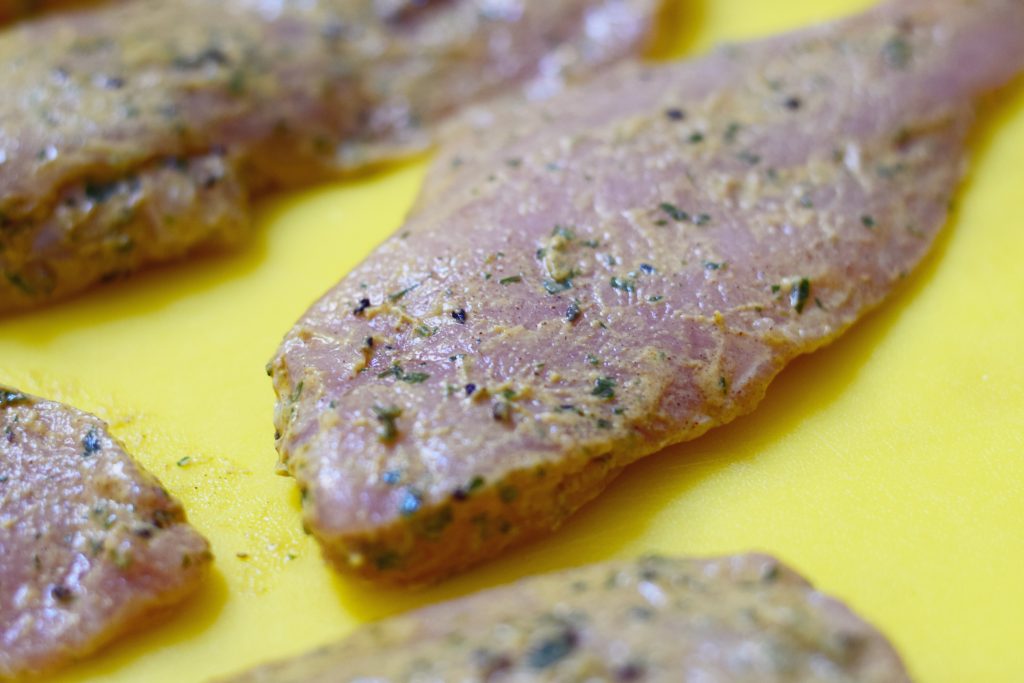
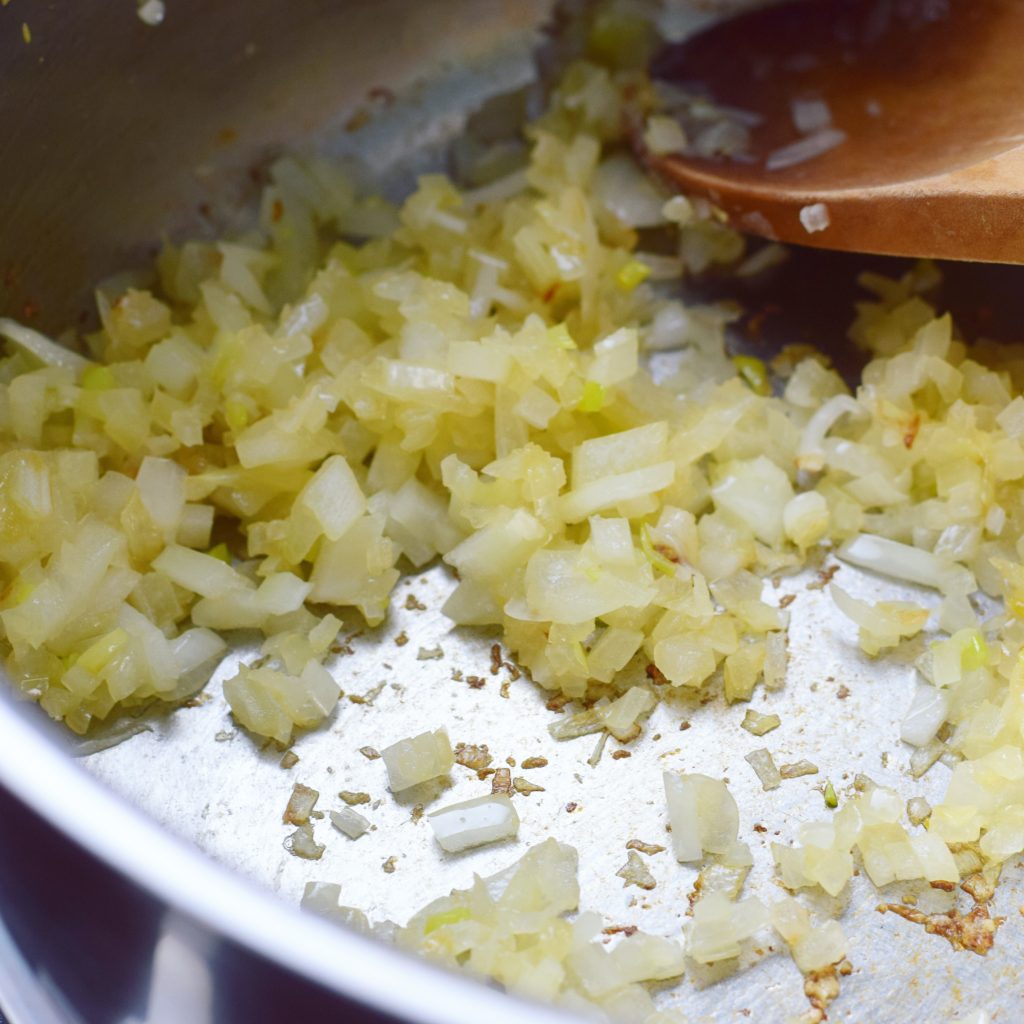
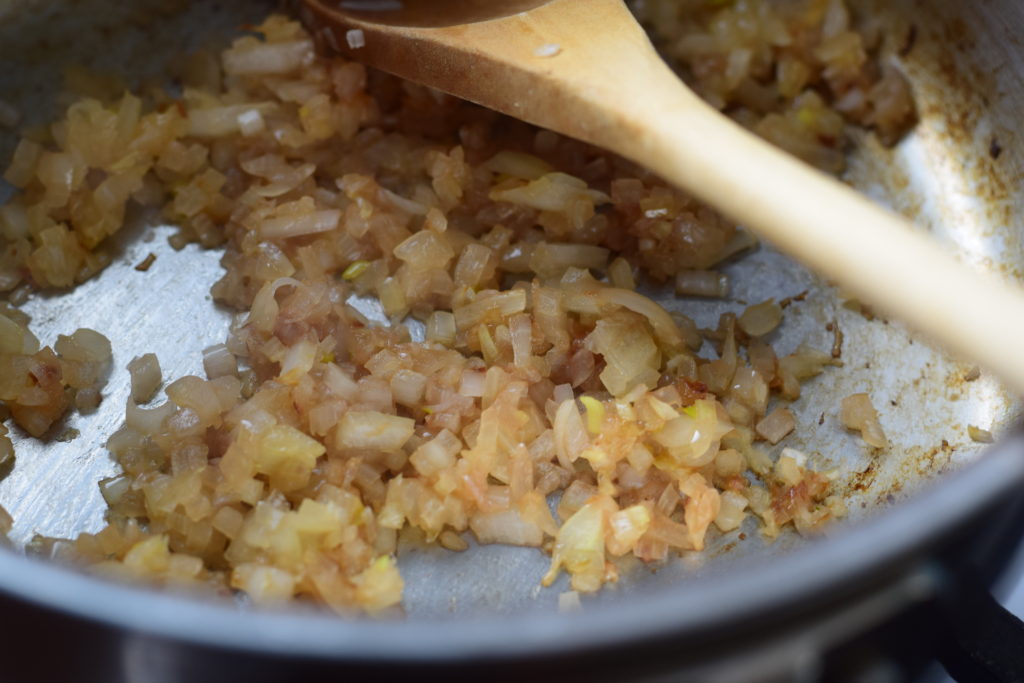
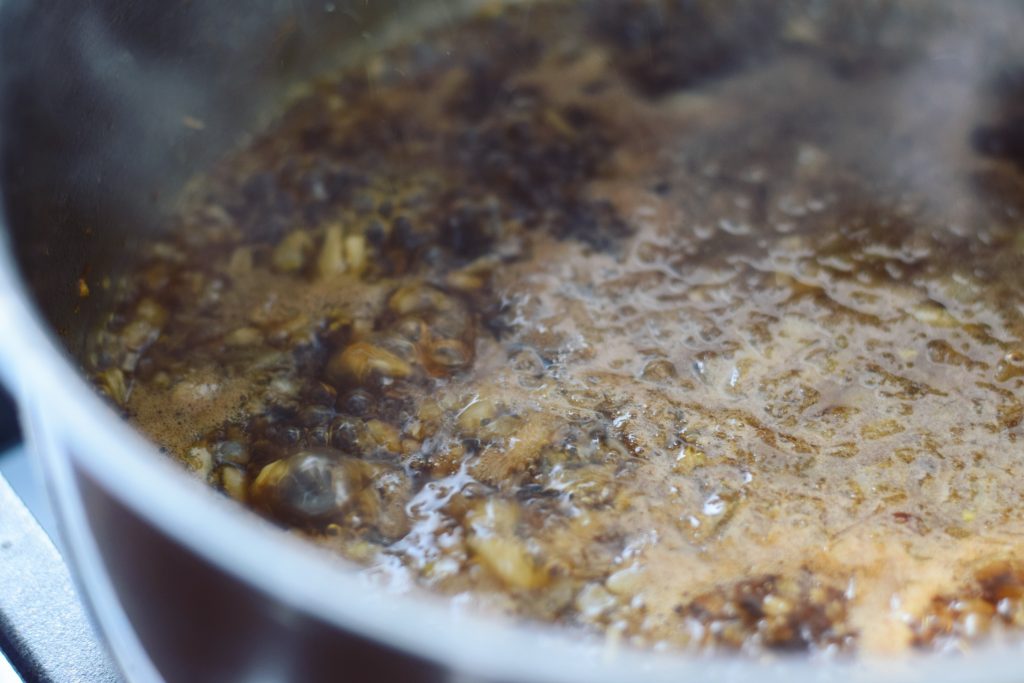
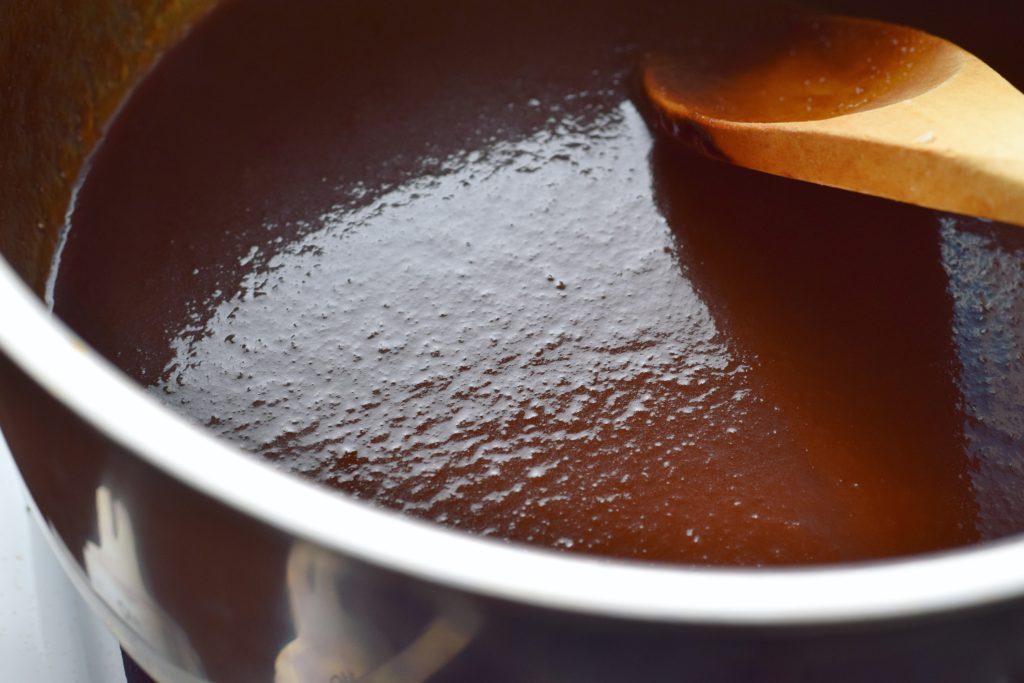
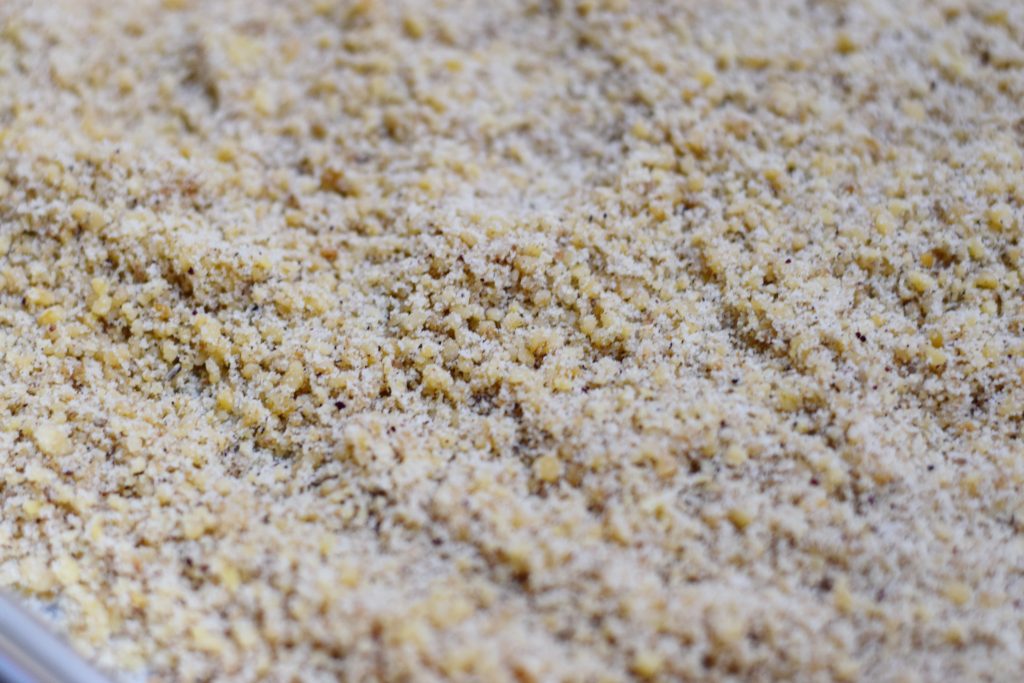

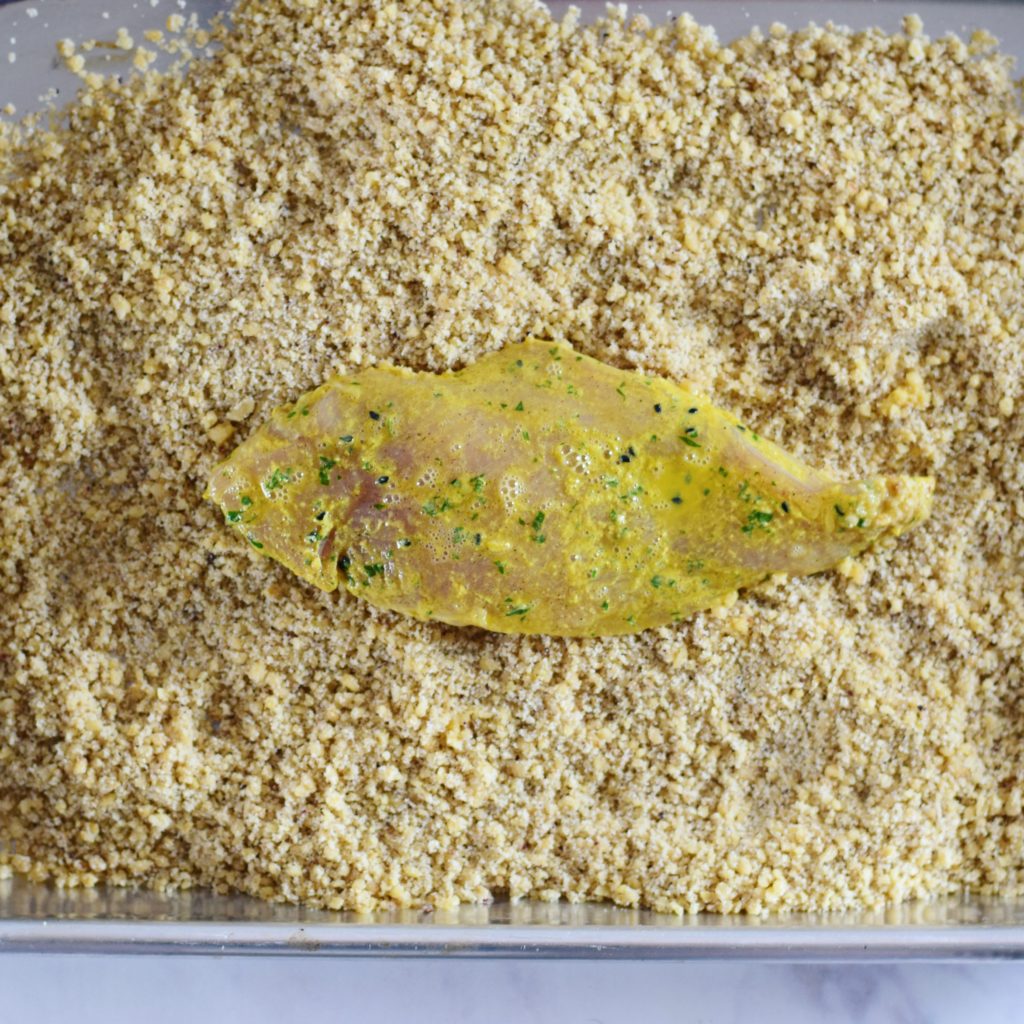
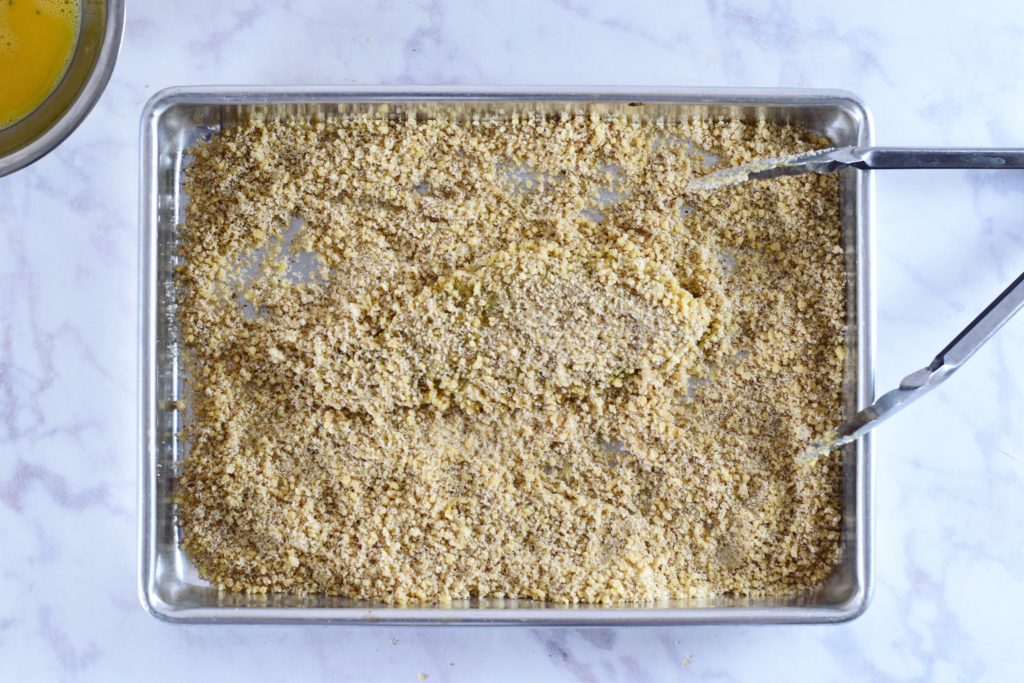
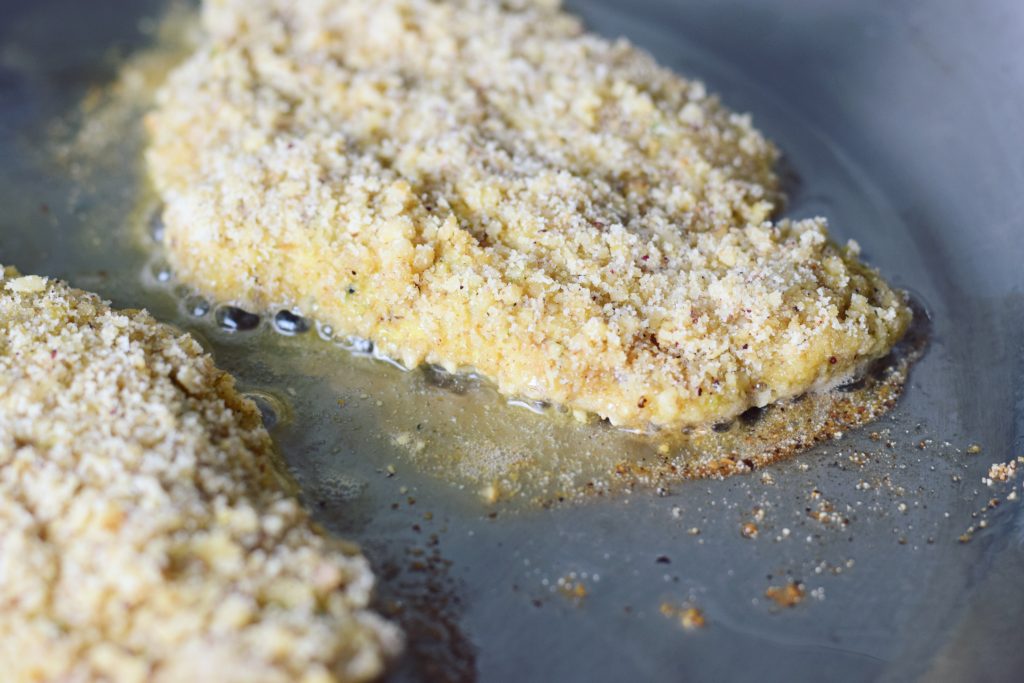
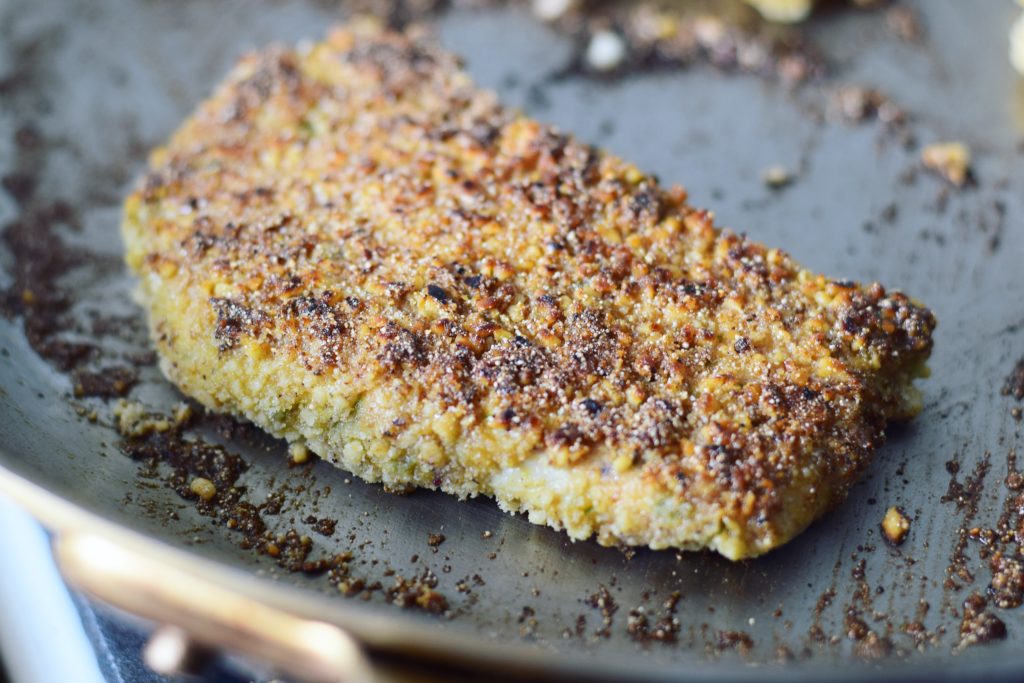
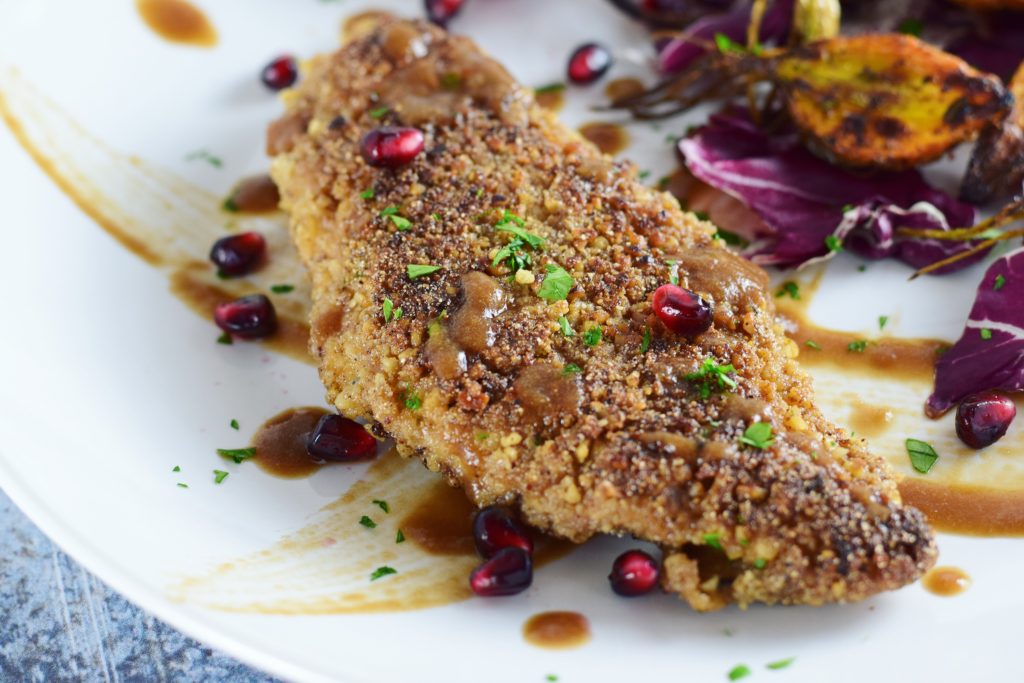

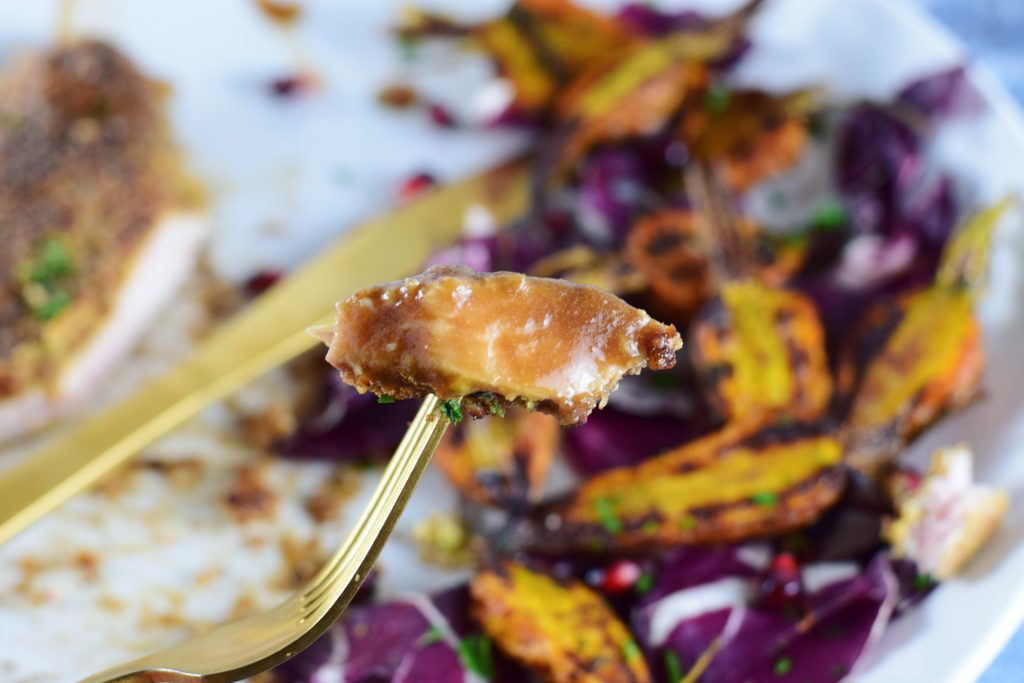



Leave a Reply